 News Release
News ReleaseSlashing Methane Emissions 30% By 2030 Could Be Key To Achieving Net Zero Targets — Here’s What AgTech Companies Are Doing To Help
Pond Technologies Holdings Inc.
The latest estimates put annual global methane emissions at 580 million tonnes (Mts) per year, creating atmospheric concentrations that are 2½ times denser than preindustrial levels. About 25% of that methane comes from the agricultural sector alone — mostly from gassy cows whose burps contain methane. With an estimated 1.4 billion cows worldwide and each cow belching approximately 220 pounds of methane each year, those burps add up. President Biden has even supported a bill that would tackle this issue, to the tune of $20 billion, due to its impact on the environment. That’s why companies like Pond Technologies Holdings Inc. ( OTCQB: PNDHF ) are exploring cost-effective, scalable ways to cut agricultural methane emissions and help nations around the world meet their Global Methane Pledge. Nations Need To Cut Methane Emissions If They Hope To Hit Net Zero Goals As part of the Global Methane Pledge launched at the 2021 United Nations Climate Change Conference (COP26) last year, 111 countries collectively responsible for 45% of methane emissions committed to reduce those emissions to 30% below 2020 levels by 2030. Methane is one of the most potent greenhouse gasses in Earth’s atmosphere — it has over 80 times the warming power of carbon dioxide and accounts for as much as 30% of the global temperature increase scientists expect to see in the next 20 years. Because of this enhanced warming effect, cutting 170 Mts, 30% of 2020 levels, in methane emissions would be the equivalent of scrubbing 4.7 billion to 6.1 billion tonnes of carbon dioxide emissions from the atmosphere per year. If the global temperature increase surpasses 1.5 C above its pre industrial average, scientists warn of the following changes in our climate could occur: Extreme heat events — like the recent record-breaking heat wave that swept Europe this summer, sparking wildfires in four countries and contributing to over 1,000 deaths — that used to happen once a decade or less would happen more than four times per decade. The risk of severe flooding will more than double for 73% of the world’s population. The total forest area at risk of forest fires would nearly double in the United States alone and fires could become about 37% more frequent. An average of more than 114 million people each month will be exposed to extreme drought conditions that could ruin food crops and make already-scarce drinking water even harder to come by. Curbing Agricultural Emissions Might Hinge On Discovering An Anti-Methane Diet For Livestock Methane in agriculture is produced primarily by livestock — especially cows — as their digestive process produces methane as a byproduct that is released when they burp. That means tackling methane levels for farmers means devising a way to make cows burp less. The approach that’s made the most progress is changing cows’ diet. Royal DSM (OTCQX: KDSKF), for example, has already shown some success with this approach using a feed additive called Bovaer that’s been shown to reduce methane from burping by around 30%. Algae May Hold Another Key To Slashing Methane Emissions In April, Pond Technologies partnered with Cross River Infrastructure Partners LLC and Livalta/AB Agri, a subsidiary of Associated British Foods plc (LSE: ABF) to identify algae strains that could reduce methane emissions when added to livestock feed. The research partnership could be a promising one as a separate study of red macroalgae (seaweed) found that it could cut methane emissions by up to 80% when added to cattle feed. However, scaling the production of seaweed would require turning large swaths of shorelines into seaweed farms, which could end up having its own environmental impacts on ocean and coastal ecosystems. That’s why Pond is partnering with these companies to explore microalgae strains that could offer the same methane-busting benefits as seaweed. Pond has already deployed what it reports is an innovative, scalable algae grow system that allows producers to grow microalgae in tanks where the conditions are optimized for algae growth. The tanks also help cut CO2 emissions themselves. Because algae use CO2 to grow, the proprietary Pond tanks can take the raw stack gas from power plants, factories and other high-emission facilities and convert it into clean, breathable air. The goal, then, is to identify microalgae strains that can be grown in these CO2-scrubbing platforms so that the companies can harvest them and turn them into feed additives. That way, each batch is pulling double duty: scrubbing emissions as it grows in the tank and curbing emissions again after it’s fed to livestock. Featured photo by Jan Koetsier on Pexels About Pond Technologies Located in Markham, Ontario, Pond has developed a proprietary system that can profitably transform CO2 into valuable products. Its Pond Carbon business focuses on absorbing greenhouse gas emissions, transforming these into food, feed, and nutraceutical ingredients. Pond recently added a Biotech division focused on the growth of unique strains of microalgae to be used as a reproductive medium for the expression of human antibodies and proteins. For more information, please visit https://www.pondtech.com/. This post contains sponsored advertising content. This content is for informational purposes only and is not intended to be investing advice. Contact Details Pond Technologies, Inc. Grant Smith info@pondtech.com Benzinga Benzinga Brand Studio contributors@benzinga.com Company Website https://www.pondtech.com/
August 10, 2022 08:35 AM Eastern Daylight Time
Image





